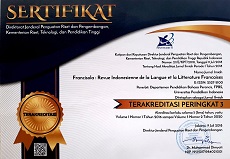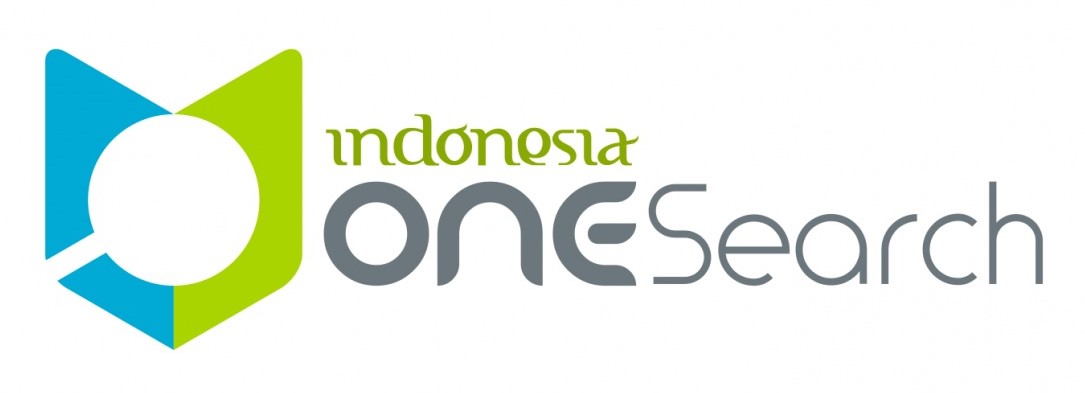Relationship as seen through letter-writing style in Van Gogh’s letters to Gauguin
Abstract
RÉSUMÉ. Van Gogh a tenté de former une communauté avec Gauguin. Cet article parle de leur relation dans des lettres de VG. Le choix des mots, le style de langue, la structure des lettres et les fonctions syntaxiques utilisées dans les phrases de ses lettres ont été extraits des six lettres de VG et analysés à l'aide d'une méthode qualitative, l'approche de l’ACD et de la théorie des fonctions syntaxiques françaises de Le Querler. L’amitié respectueuse est construite par la politesse mais pas complètement formelle. Cette relation asymétrique se reflète à travers la diction contrastée, le choix des pronoms et des salutations, l'utilisation d'un langage implicite et aussi par l'expansion de la structure de la phrase pour être plus poli. Grâce au style d'écriture de lettres de VG, leur relation évolue d'une transaction à quelque chose de plus personnel. Les différences d'ancienneté et de réputation sont souvent devenues un facteur influençant les relations et la communication.
Mots-clés : analyse critique du discours, Gauguin, style de langage, fonction syntaxique, van Gogh
ABSTRACT. Van Gogh, the Dutch post-impressionist painter, tried to form a community with Gaugin, the French post-impressionist painter, printmaker and sculptor. This article studied VG’s relationship with Gauguin in letters written by VG. The words choice, language style, letter structure, and syntactic functions used in the sentences of his letters were extracted from VG’s six surviving letters and analyzed using a qualitative method, CDA approach and Le Querler’s French syntactic functions theory. We discover that VG tried to build a respectful friendship through politeness but not completely in a formal language style. This asymmetrical relationship reflects through the contrasting diction, choice of pronouns and greetings, the use of implicit language and also by expansion in the sentence structure to be more polite. Through VG’s letter-writing style, their relationship evolves from being transactional into something more personal. Seniority and reputational differences often became a factor influencing relationships and communication.
Keywords: critical discourse analysis, Gauguin, language style, syntactic function, van Gogh
Full Text:
PDFReferences
Amoussou, F., & Allagbe, A. (2018). Principles, theories and approaches to critical discourse analysis. International Journal on Studies in English Language and Literature, 6(1), 11–18. https://doi.org/10.20431/2347-3134.0601002
Apostolopoulou, A., & Issari, P. (2022). Constructions of artistic creativity in the letters of Vincent Van Gogh. The Qualitative Report. https://doi.org/10.46743/2160-3715/2022.5172
Dasgupta, S., Vanspauwen, R., Guneri, E. A., & Mandala, M. (2022). Vincent van Gogh and the elusive diagnosis of vestibular migraine. Medical Hypotheses, 159, 110747. https://doi.org/10.1016/j.mehy.2021.110747
Daudet, A. (2016). Tartarin de Tarascon. Project Gutenberg.
De Goncourt, E., & De Goncourt, J. (2009). Germinie Lacertueux. Project Gutenberg.
Dunois, A. (1894). Le Secrétaire universel contenant des modéles de lettres sur toutes sortes de sujets. Gernier frères.
Dwiputri, F. & Laksman-Huntley, M. (2020). Media framing on online news headlines in regards to the gilets jaunes phenomenon. JURNAL ILMU BUDAYA, 8(2), 367–378. https://doi.org/10.34050/jib.v8i2.11260
van Emmerik, A., & Hamaker, E. (2017). Paint it black: Using change-point analysis to investigate increasing vulnerability to depression towards the end of Vincent van Gogh’s life. Healthcare, 5(3), 53. https://doi.org/10.3390/healthcare5030053
Etro, F., Marchesi, S., & Stepanova, E. (2020). Liberalizing art. Evidence on the impressionists at the end of the Paris salon. SSRN Electronic Journal. https://doi.org/10.2139/ssrn.3538321
Gardner-Chloros, P. (2017). Historical and modern studies of codeswitching: A tale of mutual enrichment. Multilingual Practices in Language History, 15, 19–36. https://doi.org/10.1515/9781501504945-002
Gauguin, P., & Dallet, J.-M. (2017). Avant et après. La Table ronde.
Jansen, L., Luijten, H., & Bakker, N. (2009). Vincent van Gogh - The Letters. Amsterdam & The Hague: Van Gogh Museum & Huygens ING. http://vangoghletters.org
Kaufmann, H., & Wildegans, R., (2008). Van Goghs Ohr: aul Gauguin und der Pakt des Schweigens Berlin: Osburg.
Khalaf, M. K. (2020). Discourse analysis of business letters for the construction and maintenance of Fallu-ja bridge between 1927-1929. KnE Social Sciences. https://doi.org/10.18502/kss.v4i8.7211
Krall, Emma, "Van Gogh, Nature, and Spirituality" (2021). Art and Art History. 2.
https://scholarship.rollins.edu/honors-in-the-major-art/2
LeRobert. (2019). Bête; Carcasse; Désirer ; Permettre. In Le Petit Robert : Dictionnaire Alphabétique et Analogique de la Langue Française (Nouvelle édition millésime, p. 245, 353, 707, 1865).
Le Querler, N. (1994). Préçis de Syntaxe Française. Presses Univ. de Caen.
Levitt, H. M., Bamberg, M., Creswell, J. W., Frost, D. M., Josselson, R., & Suárez-Orozco, C. (2018). Journal article reporting standards for qualitative primary, qualitative meta-analytic, and mixed methods research in psychology: The APA Publications and Communications Board task force report. American Psychologist, 73(1), 26-46. http://dx.doi.org/10.1037/amp0000151
Mahmud, M. (2019). The use of politeness strategies in the classroom context by English university students. Indonesian Journal of Applied Linguistics, 8(3), 597-606.
Maleuvre, D. (2018). The Trial of Paul Gauguin. Mosaic: An Interdisciplinary Critical Journal, 51(1), 197–213.
Meiratnasari, A., Wijayanto, A., & Suparno, S. (2019). An analysis of politeness strategies in Indonesian English textbooks. ELS Journal on Interdisciplinary Studies in Humanities, 2(4), 529–540. https://doi.org/10.34050/els-jish.v2i4.8393
Morowitz, L., & Vaughan, W. (2019). Anonymity, artistic brotherhoods and the art market in the fin de siècle. In Artistic Brotherhoods in the Nineteenth Century. Chapter, Routledge.
Murray, B. (2020). ‘Van Gogh’ Syndrome: A term to approach with caution. General Psychiatry, 33(5). https://doi.org/10.1136/gpsych-2020-100210
Naifeh, S. & Smith, G. W. (2011). Van Gogh: The Life. London: Profile Books.
Nolen, W. A., van Meekeren, E., Voskuil, P., & van Tilburg, W. (2020). New vision on the mental problems of Vincent van Gogh; results from a bottom-up approach using (semi-)structured diagnostic interviews. International Journal of Bipolar Disorders, 8(1). https://doi.org/10.1186/s40345-020-00196-z
Pranoto, B. E., & Yuwono, U. (2017). Leader’s attitude towards terrorism: A critical discourse analysis of Dr. Mahathir Mohamad’s diplomatic letters. Cultural Dynamics in a Globalized World, 65–73. https://doi.org/10.1201/9781315225340-10
Purwoko, B., & Puspitasari, D. (2018). ‘Studi Kepustakaan Penerapan Konseling Solution-Focused Brief Therapy (Literature study on solution-focused brief therapy counseling application [SFBT])’, Jurnal BK UNESA, 8(2),76-85.
Reisigl, M. & Wodak, R. (2016). The discourse-historical approach (DHA)’. In R. Wodak and M. Meyer (Ed.) Methods of critical discourse studies. (pp. 23-61). London: Sage Publications Ltd, 2016, 3.
Ruytenbeek, N. (2019). Do indirect requests communicate politeness? an experimental study of conventionalized indirect requests in French email communication. Journal of Politeness Research, 16(1), 111–142. https://doi.org/10.1515/pr-2017-0026
Saeli, H. (2016). Persian favor asking in formal and informal academic contexts. Pragmatics. Quarterly Publication of the International Pragmatics Association (IPrA), 26(2), 315–344. https://doi.org/10.1075/prag.26.2.06sae
Safitri, M., & Laksman-Huntley, M. (2017). Langue à l’en-Tête de l’annonce dans le Magazine de Mode Feminine “Elle”, Intelligence Linguistique et Littéraire à l’Ère Informatique, Actes de la Conférence Internationale sur le Français, 240-248.
Sari, R., Putri, S. E., Herdi, H., & Hamuddin, B. (2018). Bridging critical discourse analysis in media discourse studies. Indonesian EFL Journal, 4 (2), 80-89. doi: 10.25134/ieflj.v4i2.1379.
Tamba, N. S., & Laksman-Huntley, M. (2020). Penggunaan fungsi Pelengkap pada Kalimat dalam Tract Mei 1968 (Use of the Complement function in Sentences in the May 1968 Tract). JURNAL ILMU BUDAYA, 8(1), 1.
Torres, J. (2020). Politeness strategies vis-à-vis genders and exposures to western culture: The case of ‘the voice of the philippines’ coaches. International Journal of Linguistics and Translation Studies, 1(3), 100–117. https://doi.org/10.36892/ijlts.v1i3.1
Vásquez, A. (2016). Entre infini et extravagance: le romantisme français dans l'épistolaire de Juan María Gutiérrez. Synergies Argentine, (4), 15-28.
Van der Veen, W. (2002). “En tant que quant à mois”: Vincent van Gogh and the French language. Van Gogh Museum Journal, 63–77.
Wodak, R., & Meyer, M. (2016). Methods of critical discourse analysis. Sage.
DOI: https://doi.org/10.17509/francisola.v7i1.53536
Refbacks
- There are currently no refbacks.
Copyright (c) 2022 FRANCISOLA

This work is licensed under a Creative Commons Attribution-ShareAlike 4.0 International License.
View My Stats











